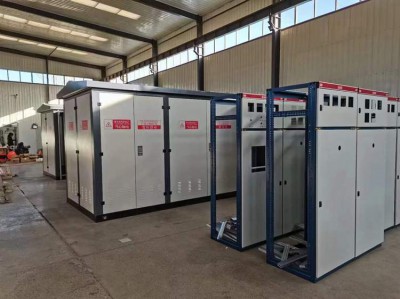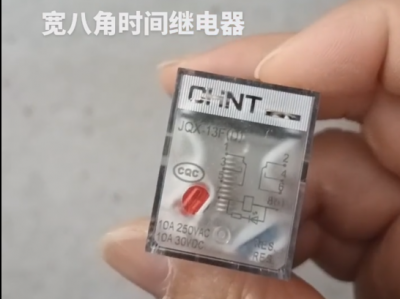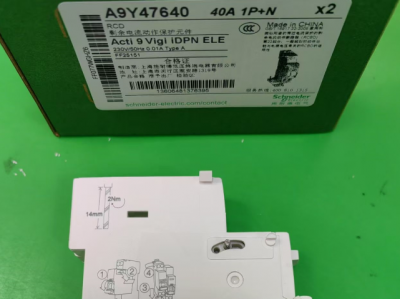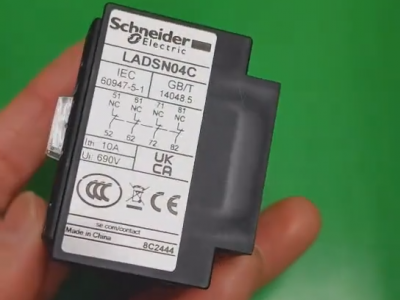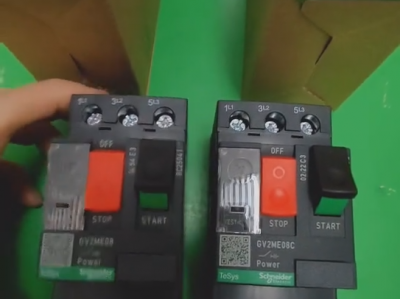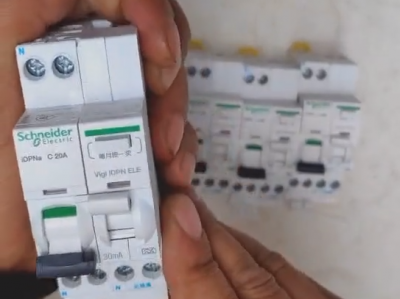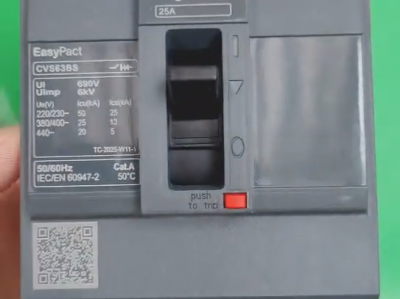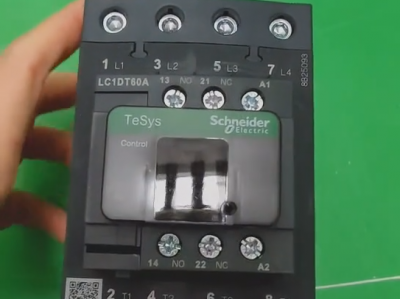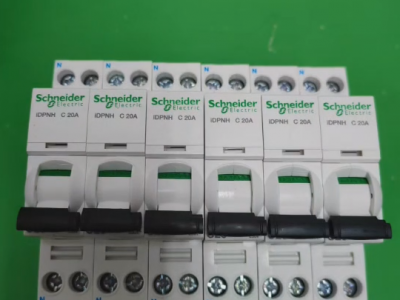chint MCCB nm1-630s-3300-630A
Product description
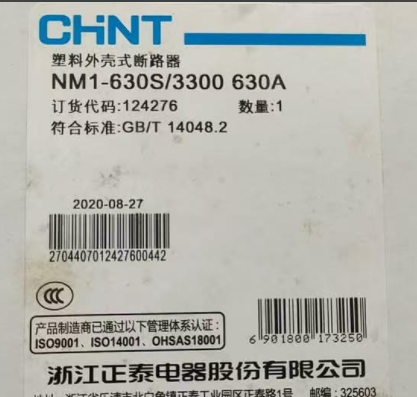
The Chint NM1-630S/3300-630A is a high-performance molded case circuit breaker belonging to the Chint NM1 series, mainly used for overload, short circuit and undervoltage protection in the power distribution system. The following is a detailed analysis of this model:
**I. Model Analysis*Schneider Circuit Breakers Price*
- **NM1**:
- **N**: Enterprise characteristic code (Chint).
- **M**: Molded case circuit breaker.
- **1**: Design serial number.
- **630S*Chint's NB1-63DC series DC circuit breakers Price*:
- **630**: Frame rated current (630A).
- **S**: Breaking capacity characteristic code (**Standard type**, with a breaking capacity of 35kA).
- **3300*Chint NXR series thermal overload relays price*:
- **3**: Number of poles (3 poles).
- **3**: Type of release (**Thermal-magnetic release**, with both overload and short circuit protection functions).
- **00**: No accessories (If auxiliary contacts, shunt trip devices, etc. are required, separate customization is needed).
- **630A**: Rated current (630A).
**II. Core Parameters and Functions**
1. **Electrical Parameters*CHINT contactor price*:
- **Rated insulation voltage**: 800V.
- **Rated operating voltage**: AC 50Hz/60Hz, 415V or 690V (Select according to the application scenario).
- **Breaking capacity**: 35kA (Standard type S), suitable for medium and low short-circuit current scenarios.
- **Arcing distance**: ≤50mm, with high safety.
2. **Protection Functions*CHINT surge protector price*:
- **Overload protection**: Achieved through a bimetallic strip, with an inverse time characteristic.
- **Short circuit protection**: The electromagnetic release acts instantaneously, with a response time < 0.1 second.
- **Undervoltage protection**: An undervoltage release needs to be optionally selected (Accessory code 330).
3. **Structural Design*Schneider LRD Thermal Relay Price*:
- **Transparent cover design**: Some frame levels (such as 63A~630A) support a transparent cover, which is convenient for observing the internal status.
- **Installation method**: Supports vertical or horizontal installation, and is compatible with front-of-panel, rear-of-panel or plug-in wiring.
4. **Certifications and Standards**:
- Complies with GB/T 14048.2 and IEC 60947-2 standards, and has passed CCC, KEMA and CE certifications.
**III. Application Scenarios**
- **Industrial Power Distribution**: Used for the protection of main incoming lines or branch lines in factories and workshops, and supports the infrequent starting of motors.
- **Commercial Buildings**: Low-voltage power distribution cabinets in shopping malls and office buildings, protecting the outgoing lines of transformers and important loads.
- **Power System**: As a protection device on the low-voltage side of a substation, it cooperates with the superior circuit breaker to achieve selective protection.
**IV. Accessories and Extensions**
- **Optional Accessories**:
- **Auxiliary contacts (Code 320)**: Used to indicate the status of the circuit breaker and link with the signal system.
- **Shunt trip device (Code 310)**: Controls the opening remotely, suitable for fire protection linkage or automation systems.
- **Undervoltage release (Code 330)**: Automatically trips when the voltage is lower than the set value, protecting the equipment from damage caused by low voltage.
- **Alarm contacts (Code 308)**: Outputs an alarm signal in case of a fault, facilitating operation and maintenance personnel to locate the problem.
- **Customization Requirements**:
- Supports rear-of-panel wiring or plug-in structure, adapting to different power distribution cabinet designs.
- An electric operating mechanism can be installed additionally (Needs to be ordered separately) to achieve remote closing/opening.
**V. Suppliers and Prices**
- **Procurement Channels**:
- **Domestic**: Chint's officially authorized dealers (such as the general agent in Shanghai), Suning.com, JD.com and other platforms.
- **International**: Cross-border e-commerce platforms such as Alibaba and OKmarts. The price is approximately **$100~$245** (Fluctuates according to the purchase quantity).
- **Notes**:
- There is still inventory in 2025, but it is necessary to confirm whether it is an upgraded product (such as the second-generation model of NM1-630S/3300).
- Some suppliers provide customization services, such as special voltage (415V) or accessory combinations.
**VI. Selection Suggestions**
1. **Alternative Models**:
- If a higher breaking capacity (such as 50kA) is required, you can choose **NM1-630H/3300** (H represents the higher breaking type).
- If a four-pole circuit breaker is required, the model is **NM1-630S/4300**.
2. **Installation Key Points**:
- Ensure that the ambient temperature is between -5°C and +40°C, and the altitude is ≤2000m.
- Tighten the wiring terminals to the specified torque (Refer to the instruction manual) to avoid poor contact.
3. **Maintenance Suggestions**:
- Regularly check the wear condition of the contacts and replace them if necessary.
- Conduct a release characteristic test once a year to ensure the normal operation of the protection function.
**VII. User Reviews**
- **Advantages**:
- Small in size and strong in breaking capacity, suitable for power distribution cabinets with limited space.
- The transparent cover design is convenient for maintenance, and the short arcing distance reduces potential safety hazards.
- Chint's brand has a complete after-sales network, and the supply of accessories is timely.
- **Disadvantages**:
- The price is slightly higher than domestic brands (such as Delixi), but the cost performance is better than imported products (such as Schneider).
- Some users have reported that the installation of accessories requires professional tools, and the operation is a bit complicated.
The following is the maintenance method of Chint's NM1 series molded case circuit breakers.
Combining official technical materials and industry practices, it is sorted out from aspects such as daily inspections, regular maintenance, component maintenance, and fault handling as follows to ensure the safe and reliable operation of the equipment:
**I. Maintenance Cycle and Safety Preparation**
1. Maintenance Cycle
- **Daily Inspection**: Once a week (Applicable to high-load scenarios) or once a month (Regular scenarios).
- **Comprehensive Maintenance**: Once every 1 to 2 years (Adjusted according to the environmental dust and humidity. For example, in a humid or dusty environment, it is recommended to conduct maintenance once every six months).
2. Safety Prerequisites
- Be sure to **disconnect the superior power supply** before maintenance and hang up a "Do not close the switch" warning sign.
- Use **insulated tools** (such as insulated gloves, screwdrivers) to avoid the risk of electric shock.
**II. Daily Inspection Items**
1. Appearance and Operation Status Inspection
- **Shell and Identification**:
- Check whether the outer shell has cracks, deformations or burn marks (Especially near the wiring terminals).
- Confirm that the model label is clear (For example, the parameters of "NM1-630S/3300-630A" match the actual load).
- **Indicator Lights and Mechanical Status**:
- For models with auxiliary contacts, observe whether the opening and closing position indicator lights are normal (Green = Open, Red = Closed).
- Manually operate the handle to check whether the opening and closing actions are smooth, without jamming or looseness (Mechanical life ≥ 10,000 times).
2. Operation Parameter Monitoring
- **Temperature Detection**:
- Use an infrared thermometer to measure the temperature of the wiring terminals. The temperature rise should be ≤ 60K (When the ambient temperature is 40°C, the terminal temperature ≤ 100°C). If there is abnormal heating (The temperature difference > 15°C), it may be due to loose wiring or contact oxidation.
- **Load Current**:
- Confirm that the actual operating current ≤ the rated current (For example, the long-term load of the 630A model should not exceed 567A, that is, use it with a 10% capacity reduction).
**III. Regular Maintenance Content**
1. Cleaning and Protection
- **Shell Cleaning**:
- Use a dry brush or compressed air (Pressure ≤ 0.2MPa) to remove dust and oil stains on the surface of the shell, and avoid the accumulation of conductive dust causing short circuits.
- In a humid environment, it can be wiped with anhydrous alcohol. Do not use corrosive cleaning agents (such as gasoline, banana water).
- **Insulation Component Inspection**:
- Check whether the arc extinguishers are carbonized or damaged (The carbonized parts can be sanded with fine sandpaper, and if they are severely damaged, they need to be replaced).
- Check whether the insulation handles and insulation parts of the terminal blocks are discolored or cracked. If necessary, apply insulating silicone grease to enhance protection.
2. Wiring Terminal Maintenance
- **Tightening Torque Inspection**:
- Re-tighten the wiring terminal bolts according to the requirements of the instruction manual (For example, the torque of the M8 bolt is 25N·m, and the torque of the M6 bolt is 10N·m) to prevent the contact resistance from increasing due to vibration.
- Multi-strand wires need to use cold-pressed terminals, and it is prohibited to insert them directly into the terminal holes (To avoid the wires coming loose and causing a short circuit).
- **Contact Status Inspection**:
- For models with a transparent cover, observe whether the main contacts are burned or oxidized (Slight burning can be sanded with fine sandpaper. When the contact wear ≥ 30%, it needs to be replaced).
- It is prohibited to sand the silver-plated contacts. Only the surface oxides need to be removed (It can be wiped with a clean cloth).
3. Release and Operating Mechanism Maintenance
- **Thermal-magnetic Release**:
- Check whether the bimetallic strip is deformed and whether the electromagnetic release coil is loose. The error of the action value should be ≤ ±5% (It can be calibrated with a special tester).
- **Electronic Release (If any)**:
- Clean the display screen and buttons, and check whether the parameter settings have been tampered with (Such as the overload long delay time, short circuit instantaneous action value).
- **Operating Mechanism Lubrication**:
- Apply a small amount of Vaseline or special lubricating grease to the mechanical transmission parts (such as rotating shafts, springs) (Avoid using liquid lubricating oil to prevent dust adsorption).
4. Function Testing
- **Opening and Closing Test**:
- Manually operate 5 times to verify the opening and closing speed (Closing time ≤ 0.1s) and synchronism (The closing time difference of the three-phase contacts ≤ 2ms).
- **Release Characteristic Test**:
- Use a release characteristic tester to simulate overload (No tripping for long delay at 1.13In, tripping for long delay at 1.45In) and short circuit (Instantaneous tripping at 5In~10In, and the specific value is shown in the model parameters), and record whether the action time complies with the GB/T 14048.2 standard.
**IV. Maintenance Suggestions for Special Scenarios**
1. High Humidity/Salt Spray Environment
- Add moisture-proof measures: Install a moisture-proof heater in the circuit breaker cabinet to maintain a relative humidity < 60%.
- Spray three-proof paint (moisture-proof, mildew-proof, salt spray-proof) on the terminal block to reduce the corrosion of metal parts.
2. Scenarios with Multiple Vibrations/Impacts (Such as beside industrial machinery)
- Regularly (Quarterly) check the tightness of the wiring terminals and internal components, and add anti-vibration pads if necessary.
- Avoid the handle from being stressed (For example, when the operating handle is not connected to an external mechanical operating device, it needs to be fixed in the neutral position).
3. Scenarios with Frequent Operations (Such as motor control)
- Shorten the maintenance cycle (Once a quarter), and focus on checking the contact wear and the fatigue degree of the operating mechanism spring (When the free length of the spring is shortened by ≥ 5%, it needs to be replaced).
**V. Common Faults and Solutions**
| Fault Phenomenon | Possible Causes | Solutions |
| Trips immediately after manual closing | Load short circuit/overload, incorrect release setting value | Check the load circuit and reset the release parameters |
| Excessive contact temperature rise | Loose wiring, contact oxidation, load exceeding the rated current | Tighten the terminals, clean the contacts, reduce the load or replace it with a model of a larger capacity |
| The opening and closing handle is jammed | Insufficient lubrication of the operating mechanism, foreign matter jamming | Clean the mechanism, apply lubricating grease, and remove foreign matter |
| Abnormal auxiliary contact signal | Poor contact of contacts, wiring falling off | Adjust the contact pressure (0.5~1N) and check the wiring terminals |
**VI. Maintenance Precautions**
1. **Prohibit Unauthorized Modification**:
- Do not disassemble the arc extinguisher or adjust the release spring by yourself (It will affect the breaking capacity and protection characteristics).
2. **Spare Parts Replacement Requirements**:
- When replacing components (such as contacts, springs), original Chint spare parts must be used to ensure that they match the model (For example, the contacts of NM1-630S and NM1-630H cannot be interchanged).
3. **Record the Maintenance Log**:
- Fill in the record (time, items, problems found, handling results) after each maintenance to facilitate tracing the equipment status.
Through standardized maintenance, the service life of the NM1 circuit breaker can be extended (The designed service life is 10~15 years), and it can be ensured to operate reliably in case of faults such as short circuits and overloads. It is recommended to formulate a personalized maintenance plan according to the actual operating environment of the equipment.
**Conclusion**
The Chint NM1-630S/3300-630A is a well-performing molded case circuit breaker suitable for the conventional protection requirements of medium and low voltage power distribution systems. Its standardized design, rich accessory options and reliable brand support make it a mainstream choice in the industrial and commercial fields. If a higher breaking capacity or special functions are required, an upgraded model or a customized solution can be considered.

